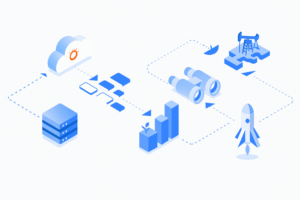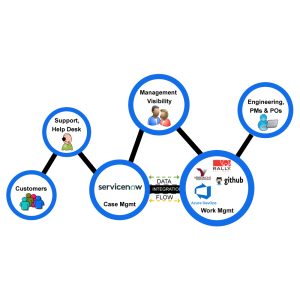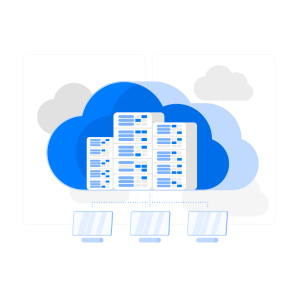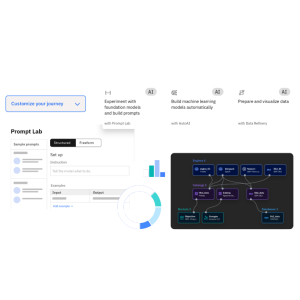Accurate forecasting is the backbone of successful business operations. In a rapidly evolving market, organizations rely on predictive analytics to make informed decisions. IBM Planning Analytics TM1 offers a powerful solution for enterprises to transform their financial planning and decision-making processes. With its advanced AI capabilities, IBM Planning Analytics combines real-time data analysis, predictive modeling, and actionable insights to drive agility and resilience.
This blog explores how enterprises can leverage financial planning software and business forecasting tools to enhance business accuracy. We’ll dive into how AI-powered forecasting works, its benefits, and real-world applications. Additionally, we will examine the role of IBM Planning Analytics TM1 in streamlining enterprise planning and how Nexright can assist businesses in achieving financial excellence.
The Need for AI-Powered Forecasting
1. Dynamic Market Conditions
Markets are volatile and subject to rapid changes. Traditional forecasting models often fail to adapt to sudden shifts in demand, supply chain disruptions, or economic uncertainties. AI-powered tools like IBM Planning Analytics TM1 utilize real-time data to predict trends accurately, helping organizations mitigate risks.
2. Data Overload and Complexity
Enterprises generate massive volumes of data from various sources. Consolidating and analyzing this data manually is inefficient. Financial planning software powered by AI automates this process, extracting actionable insights from complex data sets.
3. Agility in Decision Making
AI-driven forecasting provides real-time recommendations. Businesses can simulate multiple scenarios and predict potential outcomes, allowing decision-makers to act with confidence. Additionally, AI systems continuously learn from new data, refining forecasts and enhancing predictive accuracy over time.
Key Features of IBM Planning Analytics for Forecasting
1. Integrated AI and Predictive Analytics
IBM Planning Analytics TM1 uses embedded AI algorithms to provide real-time predictive insights. It can identify patterns, detect anomalies, and project future performance with high accuracy. Businesses can visualize trends and model various scenarios before making decisions. Enhanced scenario visibility allows organizations to evaluate the potential impact of decisions in real-time.
2. Advanced Scenario Modeling
Scenario modeling is crucial for risk management. Business forecasting tools within IBM Planning Analytics allow enterprises to simulate various financial scenarios. By assessing potential risks and opportunities, companies can develop resilient strategies. With sophisticated scenario modeling capabilities, organizations can prepare for market volatility and adjust their operations accordingly.
3. Real-Time Data Processing
With real-time data integration, decision-makers get up-to-date insights on market conditions and internal operations. Financial planning software ensures accurate projections, making budget adjustments and resource allocations more effective. Seamless access to live data enables companies to make informed decisions quickly and reduce operational inefficiencies.
4. Automated Forecasting with Machine Learning
IBM Planning Analytics applies machine learning algorithms to refine forecasts over time. It continuously learns from historical data, providing increasingly precise predictions with every update. By analyzing patterns and identifying correlations within vast data sets, AI-powered models improve forecasting accuracy, supporting long-term business growth.
Benefits of AI-Powered Forecasting with IBM Planning Analytics
1. Improved Forecast Accuracy
AI-driven models reduce human errors and biases in forecasting. Using IBM Planning Analytics TM1, businesses can generate reliable predictions based on objective data, resulting in more informed decisions. Enhanced accuracy minimizes financial uncertainty and strengthens strategic planning.
2. Enhanced Operational Efficiency
Automating forecasting tasks reduces manual efforts, freeing up valuable time for strategic planning. Teams can focus on analyzing results rather than collecting and processing data. The efficiency gains from using financial planning software lead to faster insights and accelerated decision-making.
3. Strategic Financial Planning
Financial planning software like IBM Planning Analytics enables organizations to align their financial strategies with long-term goals. Enterprises can assess the impact of strategic decisions in real-time and adjust their plans accordingly. AI-powered models provide visibility into financial outcomes, empowering leadership to make data-driven decisions.
4. Data-Driven Risk Management
Predictive analytics provide insights into potential risks and market uncertainties. Businesses can proactively mitigate risks by adjusting their operations, budgets, and resources. IBM Planning Analytics TM1 offers scenario analysis tools that help organizations prepare for various contingencies.
5. Faster Decision-Making Process
Access to real-time data allows businesses to make faster and more accurate decisions. AI-powered tools provide immediate recommendations, reducing the time required to respond to changing market conditions. By implementing business forecasting tools, companies can stay agile and maintain a competitive advantage.
Real-World Applications of IBM Planning Analytics
1. Retail and Inventory Management
Retailers can use AI-powered forecasting to predict product demand, optimize inventory levels, and reduce stock outs or excess inventory. IBM Planning Analytics TM1 helps retailers meet customer demands while minimizing operational costs.
2. Financial Services and Budgeting
Financial institutions leverage financial planning software to forecast revenue, analyze cash flow, and manage financial risks. Banks and insurance companies can predict loan defaults, market fluctuations, and investment performance with greater accuracy.
3. Manufacturing and Supply Chain Management
Manufacturers can predict production demands, optimize supply chain operations, and reduce waste using business forecasting tools. IBM Planning Analytics enables manufacturers to simulate scenarios and adjust production schedules.
4. Healthcare and Resource Management
Healthcare providers can forecast patient admissions, predict resource utilization, and allocate medical staff effectively. AI-powered forecasting also aids in managing pharmaceutical supply chains.
5. Telecommunications and Network Management
Telecom companies rely on predictive analytics to anticipate network congestion, optimize infrastructure, and enhance customer experience. IBM Planning Analytics helps providers prevent service disruptions and maintain high-quality service.
Nexright for AI-Driven Forecasting Excellence for AI-Driven Forecasting Excellence
At Nexright, we specialize in helping enterprises implement IBM Planning Analytics TM1 to unlock the power of AI-driven forecasting. Our expert team works closely with organizations to design customized solutions that deliver actionable insights. From integrating data sources to building predictive models, we ensure that businesses maximize the value of their financial planning software.
Whether you aim to improve forecast accuracy, optimize resource allocation, or mitigate financial risks, Nexright, provides the expertise you need. Our tailored approach ensures seamless implementation and continuous support, empowering your business to make data-driven decisions confidently.
Contact Nexright, today to explore how IBM Planning Analytics can transform your financial planning and decision-making processes.




